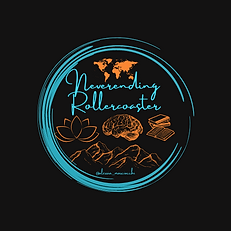Snowshoes
- Alessia Masciocchi
- Dec 27, 2023
- 3 min read
Updated: Jul 16, 2024
"Snowshoes are a tool that allows for easy movement on fresh snow by increasing the surface area and, consequently, the 'float,' typically used in snow hiking activities. Initially made of braided rope and wood, today they are mostly made of plastic or similar materials." (Source: https://en.wikipedia.org/wiki/Snowshoe)
"In the past, hunters and farmers struggled to advance in snowy landscapes with cumbersome snowshoes that prevented them from sinking into the pristine blanket. Snowshoes consisted of a circle or oval of wood and strips of leather tied together." (Source: https://www.guidedolomiti.com/ciaspole-ciaspe-dolomiti/)
How are snowshoes made today?
Over time, snowshoes have been replaced by other snow-walking gear but have returned to popularity in recent decades for recreational purposes. Now, they have a plastic mould or an aluminium frame (with a neoprene or polyurethane support surface).
They also have adjustable bindings—similar to rental skates or in-line roller skates—that allow for regular walking on various terrains. Some even have a "heel lift," a great ally for mountaineering skiers, present in the best snowshoe models to assist on steep or specific snowy terrains.
Snowshoes have fixed crampons under the binding to allow the snow hiker to grip various snow formations.
Which ones to prefer? Based on what?
I must clarify that I am not a frequent user of snowshoes, but I have researched to better understand their utility and versatility.
Generally, the rule is: "The flatter the terrain, the longer the snowshoes should be," and vice versa for steep slopes. Additionally, while purchasing, consider how often you plan to use them and the body-to-gear ratio.
How to put them on?
Yes, folks: snowshoes have a left and a right!
How to differentiate them? Look at the direction of the closure buckle: it should always be facing outward.
Additionally, the toe of the boot should align with the front point, secured with the front strap; finally, the boot heel should remain in the centre of the snowshoe and secured with the rear straps.
Don't forget the poles that should accompany the snowshoes: from my experience in skiing (alpine and mountaineering), hiking, and some easy mountaineering.
A piece of advice: always choose poles that can be shortened or lengthened and have a long-padded section, useful for keeping hands at the same height on slopes. Don't forget the wide powder baskets to prevent the poles from sinking into the snow with each step.
How to walk with them?
I must say that I found it quite natural to walk with snowshoes the first time I rented them, but I don't think I have an "impeccable" technique. I glanced at some mountain websites, picked up a few tips, and here's a summary of everything:
Keep your legs more spread apart than the typical "hip width," at least to ensure that the snowshoes don't get tangled with each other;
As usual, I would advise not to start too quickly: you risk ending the excursion prematurely, especially if you're not accustomed to the effort;
In fresh snow, maintain a rhythmic pace and shift the center of gravity (torso) onto the supporting foot. Tip tap. Tip tap. Tip tap;
The progression is precise: this is necessary to place the foot securely;
Keep the torso upright, avoiding continuous forward and backward movements—causing many backaches;
The arms should be kept slightly open, as in ski touring, allowing better breathing and alternating their movement with that of the feet:
When climbing on hard snow, move to the maximum slope.
I spoke with the mountain guides with whom I did a mountaineering ski course, and they believe that only certain slopes are suitable for snowshoes. The same applies to diagonals: these tools can be useful up to a certain point, but if the snow becomes too hard or the slopes are too steep, it's better to opt for something else and live a day more!
While descending, take small steps on the steepest slope, where you might even start to slide: here, adopt the "telemark" technique. So, here I am to help!
Lower the centre of gravity a lot during sliding (achieving stability and balance), bringing the knee of the front leg forward and lowering the knee of the back leg. A slide to the right is followed by one to the left.
And the arms? Let's not forget them! Keep them wide and in an advanced position for balance maintenance.
To turn completely? Small circular movements, never a single step.
What to bring on a snowshoe tour?
Clothing for ski touring (dress in layers);
Gloves and a hat;
Waterproof boots or hiking shoes;
Backpack with:
first aid kit;
windbreaker, for times when it's not worn;
spare shirt;
an insulated water bottle to keep drinks warm;
wire, cords, adhesive tape, and a multi-tool knife to repair any snowshoe breakages;
topographic map of the area;
Gaiters (an accessory that prevents snow from entering the shoes).

Comments